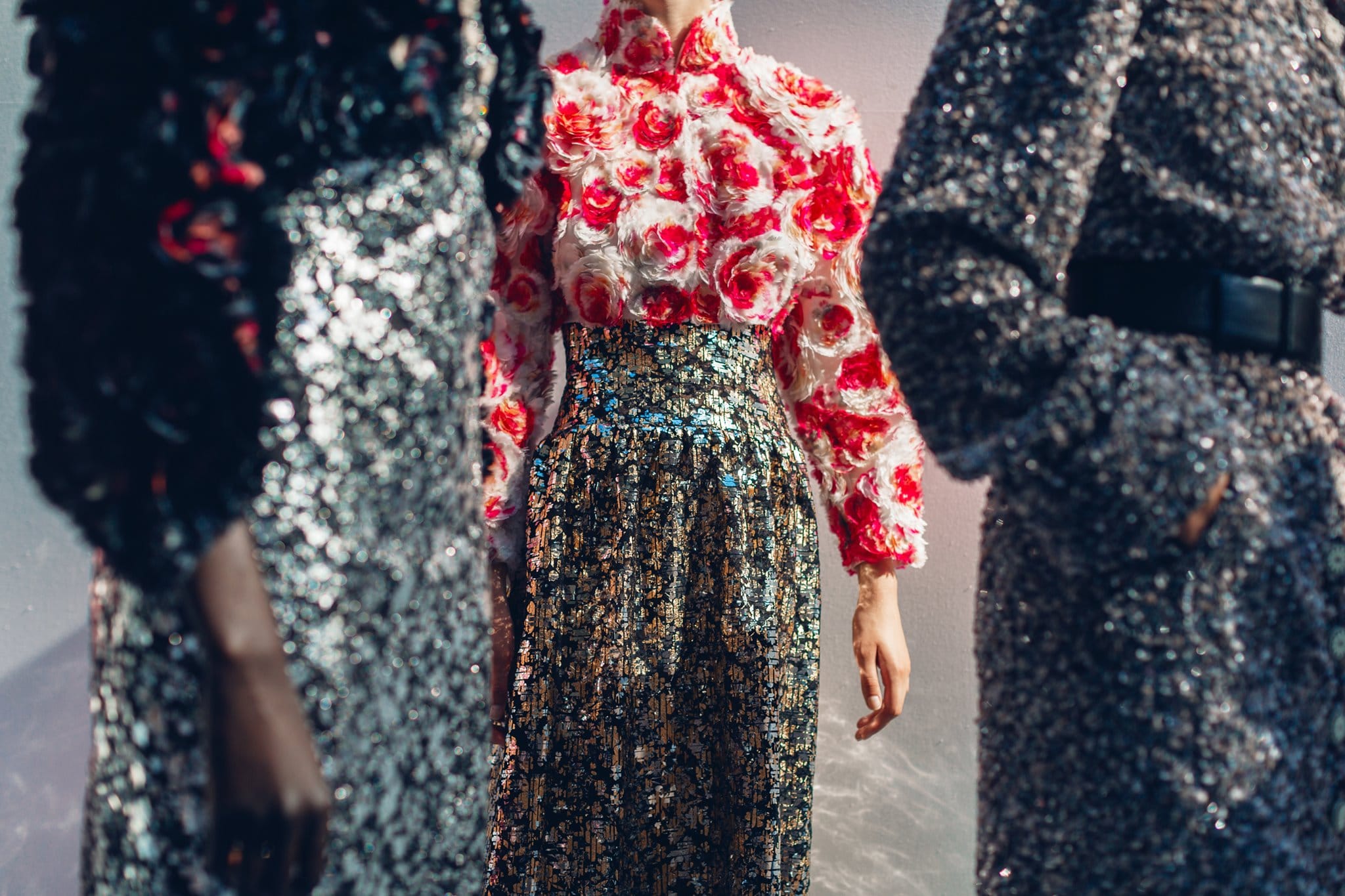[vc_row njt-role-user-roles=”administrator,armember”][vc_column][vc_column_text]
What if the coronavirus had revealed the need to fix an obsolete fashion system? In midst of What if the coronavirus had revealed the need to fix an obsolete fashion system? In the midst of an economic downturn and strong turbulence in consumption and production processes, the health crisis seems to be the perfect opportunity to accelerate changes in the fashion industry.
The beginning of a new era ?
At a time when the health crisis linked to Covid-19 is shaking up the fashion industry, which has had to shut down its factories and shops for several weeks, the opportunity for an in-depth overhaul of the system now seems more than timely.
Towards more seasonality ?
The current crisis has helped to highlight certain dysfunctions in the mechanics of the fashion industry, in particular the six-month time lag between the presentation of a collection and its placement on the shelves. Indeed, sweaters and jackets are most often shipped to stores in the middle of summer, while swimsuits and light dresses usually arrive on the shelves in January, i.e. in the middle of winter.
The reason is simple: at the time the collection is presented (usually during Fashion Weeks), it has not yet been produced.
Inconsistencies that fashion industry professionals (CEOs, designers, retailers…) including designers Marine Serre, Tory Burch, Mary Katrantzou or Alexandre Mattiussi denounced last Tuesday, May 12 in the columns of the New York Times: for the 180 signatories of this open letter, it would be necessary to “adjust the seasonality” in order to “propose autumn-winter from August to January and spring-summer from February to July“.
This consortium of fashion actors, led by Dries Van Noten, therefore proposed to bring forward the seasonal delivery schedule so that “winter clothes” would be delivered to stores between August and January and “summer clothes” would be delivered from February to July.
Hopes for a restructuring that many share.
On Wednesday 13 May, a group of some 60 designers and executives – including Joseph Altuzarra and Andrew Keith, president of Hong Kong stores Lane Crawford and Joyce – published a similar proposal to reconfigure the fashion week calendar, starting with men’s and women’s Fashion Week twice a year in January and June.
By Thursday 14 May, the manifesto had more than 600 signatures of support: designers such as Neil Barrett, Emilia Wickstead and Rachel Comey, as well as senior executives including Tomorrow CEO Stefano Martinetto.
Better seasonality of sales is thus a way for fashion market players to adapt to consumers’ needs in real time and allow them to buy immediately rather than being frustrated by a delayed purchase, especially since fashion shows, once a bargain for retail players (to preview the products they would sell six months later in their stores) are now events primarily aimed at consumers, who are on the lookout for certain products well before they go on sale.
Fewer sales and more stable prices
The generalisation of discounts in the United States, and later in Europe and Asia, has caused many problems because when most of the market is based on a discount policy, there is a disadvantage for players who do not use such promotions. As a result, they either adopt similar sales rates in order to compete with their counterparts and sell at a discount, or they refuse to align with the competition and thus see their profits seriously affected due to the surge of unsold goods.
The multiplication of sales operations around the world has therefore had a serious impact on the fashion economy in recent years, especially since selling products at discounted prices means lower margins for retailers as well as for brands. A vicious circle all in all.
The reorganization of the fashion industry would therefore involve a reduction in the commercial practices of discounts and sales.
Also, the collective led by Dries Van Noten proposes that the calendar should evolve and integrate sales “at the end of the season to allow a more complete sale – January for fall-winter and July for spring-summer“.
These changes would allow increased price unification in the fashion market: brands could thus “practice normal prices” the rest of the time and be set on an equal footing.
These changes in the way fashion companies operate would therefore make it possible to limit financial damage, maximize profitability and, above all, put an end to all of the messy discounts offered during the year that encourage over-consumption.
A more sustainable fashion
Fewer discounts will inevitably force brands and retailers to produce less product in the first place, then to better align supply and demand, and finally to cause less destruction – including the burning of clothing – at the end of the season. Less waste and more creativity means a better end product for the consumer and a more sustainable business model in every sense of the word.
Minimising the environmental impact of the fashion industry is what we are talking about today. “Less mass production, therefore less waste of raw materials and products, and less travel“, explains the collective on this subject. An idea that matches that of the founder of A.P.C. Jean Touitou, who also wants to “make clothes that are sustainable, in terms of style and quality” and to continue to “set up artistic projects that recycle our fabrics and clothes”.
“We agreed that today’s environment, while challenging, offers an opportunity for fundamental and welcome change that will simplify our businesses, make them more environmentally and socially sustainable and ultimately align them more closely with customer needs“, summed up all 180 signatories to the open letter in unison.
Rethinking the system in depth for a fashion industry that is more harmonious, balanced, equal and more aware of its impact.
A call to imagine the system of tomorrow, more topical than ever in these troubled times of coronavirus.
Read also > Global luxury industry to contract between 20% and 35% in 2020, according to Bain
Featured photo : © Chanel / Facebook
[/vc_column_text][/vc_column][/vc_row]








